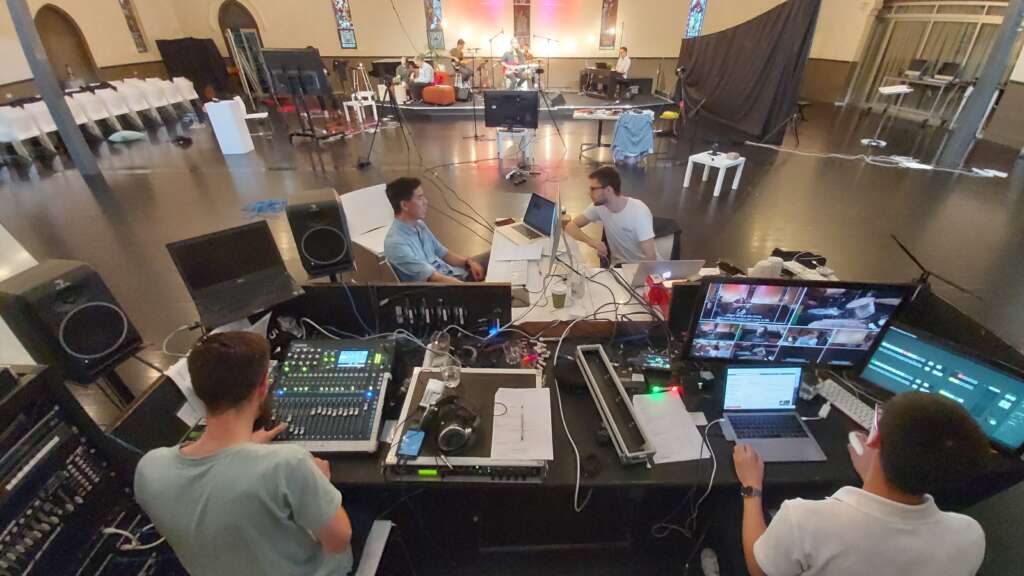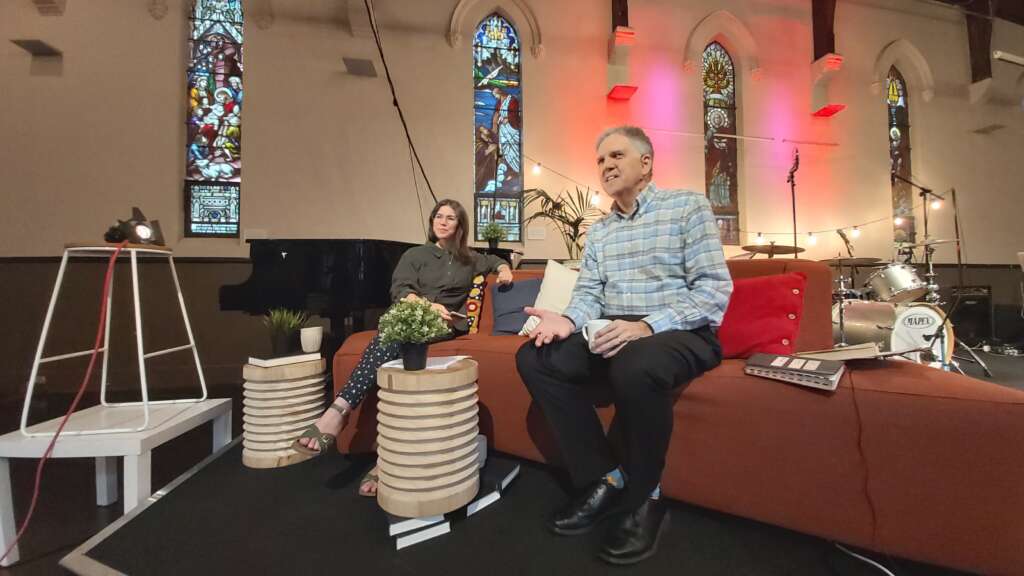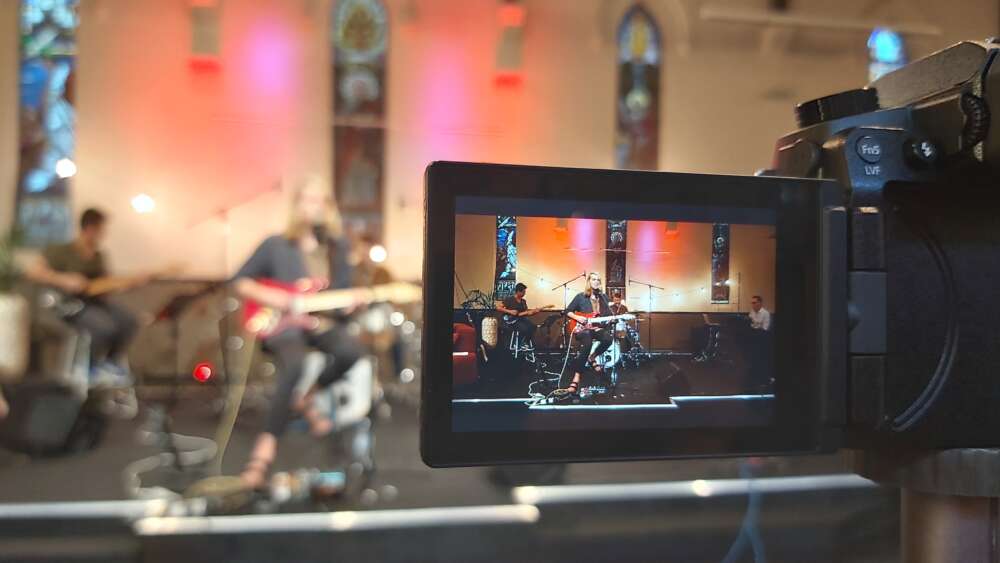If there’s one thing 2020 has taught churches it’s the value of digital technology in reaching our congregations and those beyond.
With online church having been most crucial in Australian states with tighter COVID restrictions (such as Victoria), it is still proving invaluable in places which have returned to “COVID normal”. In NSW, for example, where 300 attendees are now allowed to attend places of worship, some churches still cannot fit their whole congregation into the building, due to the four-square metre rule.
Whichever state you are in and whatever COVID restrictions apply, many Aussie church leaders have reached the same conclusion: online church is here to stay. These leaders agree digital church was inevitable and COVID-19 has simply brought about this change more rapidly.
This doesn’t mean that in-person church is no longer necessary, though. But it does mean that dual audience delivery – both in-person and online – is a long-term reality for the future of church, in Australia and across the world.
“We’re reaching between 250,000 to 300,000 unique viewers every weekend, just from Australia.” – Brian Houston
Of course, there are churches that have been offering both in-person and online church long before 2020. In more recent years, megachurch Hillsong has been livestreaming services and providing increasing options for the online viewing of its conferences. COVID has demonstrated the huge evangelistic potential of their online strategy.
“Online church has been very successful for us,” Hillsong global pastor Brian Houston said during a livestreamed service on October 24.
“In my mind it’s no replacement for being in the house and being in the building and the sense of connection and community. But as well as [church in person], it’s actually powerful.
Houston continued: “We’re reaching between 250,000 to 300,000 unique viewers every weekend, just from Australia – so our church in Australia, including Bali and Indonesia and other places in south-east Asia and the Pacific where they lean into Hillsong Australia.”
However, as Hillsong (and many other churches) realised this year, there is a difference between just supplying digital content and creating an online church community. COVID pushed Hillsong to create a new digital platform to enable engagement with its global online audience – a feat requiring a team of around 60 people.
Further proving its commitment to digital church, Hillsong has also just announced the appointment of global online lead pastors Ben and Lucille Houston, who will help coordinate online church for individual campuses in 28 countries around the world.

The Village Church ‘studio’. Village Church Sydney
On a smaller scale, Village Church in Annandale, in Sydney’s inner-west, has also been using livestreaming for several years.
“We had been streaming sermons for three years before COVID,” lead pastor Dominic Steele explains to Eternity. “We would have been streaming the whole service earlier if we had sorted out the music licensing issues. COVID prompted us to sort that out. It’s clearly a good strategy for us, as it helps people try us out before they come along.”
For Steele (a former radio journalist and host of The Pastor’s Heart podcast), establishing online church was relatively easy. “We had most of our set-up already. I think we just bought two more cameras and a few cords.”
The church uses six cameras to livestream the service (“meaning it feels like you are there”, as their website boasts).
“It takes one operator to switch the vision and, ideally, one other person who nips around adjusting camera shots. Of course, there is someone else running sound and another person running ProPresenter 7 (which does the slides for the room and the lower thirds for the broadcast). So our back desk has three to four people,” Steele explains.
“Sound is the most important thing. People will put up with bad visuals, but they won’t put up with bad sound.” – Dominic Steele
In addition, the church invested in the “significant upskilling” of its sound team.
“Sound is the most important thing. People will put up with bad visuals, but they won’t put up with bad sound. Poor sound is fatal,” says Steele, who has been sharing his advice and that of other pastors and broadcasting experts on his podcast. More recently, this has been with Victorian churches, who are only now moving towards dual audience delivery.
In order to create a sense of community for online churchgoers through COVID, Village Church has used an online check-in system. Steele describes it as “phenomenally successful”, as it allowed pastoral carers to keep track of those engaging with church.
Since the church began meeting back in person in July, they have adapted their in-person service to create engagement with online churchgoers. For example, Question Time after the sermon has moved to people submitting comments or questions online, rather than people raising their hand in the building.
Steele notes other ways in which they have tried to make their livestreamed services more online user-friendly: “We start exactly on time and the content at the start of the meeting (first two to three minutes) has become much more significant.
“We have introduced little video/audio sting/breaks to introduce different segments of the meeting, for example, an opening theme and a pre-recorded music/video theme just before the announcements and the sermon.”
Steele adds: “We address the online as well as the live in-person audience frequently.”

Behind the scenes at Village Church online, with Jess Brouwer and Dominic Steele. Village Church Sydney
These are precisely the type of changes that churches should be trying to make in order to refine their online services, according to video producer Alexander Bennett.
Bennett has been working with Partners in Ministry and Moore College’s Centre for Ministry Development (CMD) to help churches run hybrid services. Conducting a survey earlier this year of around 100 church leaders, they identified several main factors holding churches back from fully embracing online delivery.
One of these was the uncertainty around how to move from pre-recorded material to a truly live service. Despite this, Bennett notes that churches did realise the value of online church, they just did not know how to do it well.
“The churches surveyed were asked if a COVID vaccine was found and you could all meet in the church building again, would you continue to hold an online service or foster online community. Around 80 per cent of respondents said ‘yes’,” Bennett tells Eternity.
Through his organisation Digital Ministry Masterclass, Bennett is currently organising church livestream training courses, as well as offering “Church Livestreaming in a Box” – a kit containing equipment and a video training guide for livestreaming. He has also started a Facebook group called Church Livestream Level Up – Discussion to collectively share ideas, ask questions and find the best practice of streaming.
“An online service should be a two-way street, where the online congregation can also be in the conversation, make comments and engage.” – Alex Bennett
Bennett notes that online church doesn’t mean just hitting record as the in-person service plays out.
“In hybrid service where you’ve got a congregation in the room and a congregation at home, you need to treat them equally at the same time.”
“An online service should be a two-way street, where the online congregation can also be in the conversation, make comments and engage.”
Bennett gives another idea on creating this engagement: “Things like having a dedicated section at the start of a service just for the online community, to welcome people as they ‘come in’.”
It also involves having an online church strategy. “Making sure that you think about how is the ‘audience’ going to respond. So, where do you put your cameras? Some people think you need lots of cameras, but you need to ask does that actually add to the experience? Do you need a close-up shot or a wide shot? Maybe you could consider having a microphone in the congregation so that you can hear them laugh, which helps online churchgoers to feel a part of the service.”
While this may sound all too hard, Bennett points out two main reasons why investing in online church is well worth the effort.
“There will always be a place for physically meeting up and that can’t be a replaced experience. But I think the benefit of online church is that it means we can better cater to vulnerable people, and people who can’t make it to church on Sunday for whatever reason.”
The second reason Bennett gives (as a true Millennial) relates to the Church’s future. “People are probably going to visit church from their homes before coming in person. Online church is like a window that people can look through before entering the building. People won’t be walking down the main street, hear a hymn and stumble into church anymore. They will first enter it through an online platform.”
“I think God has used coronavirus to really help many churches that needed to update and be brought into the 21st century. To revert back would be a big shame and a big loss.”
Many resources are available to help churches effectively deliver services for a dual audience, such as at Bible Society Australia’s Leaders Connect page.
*Eternity Deputy Editor Ben McEachen is a member of Village Church, Annandale. You can even see him on the livestream some times.




